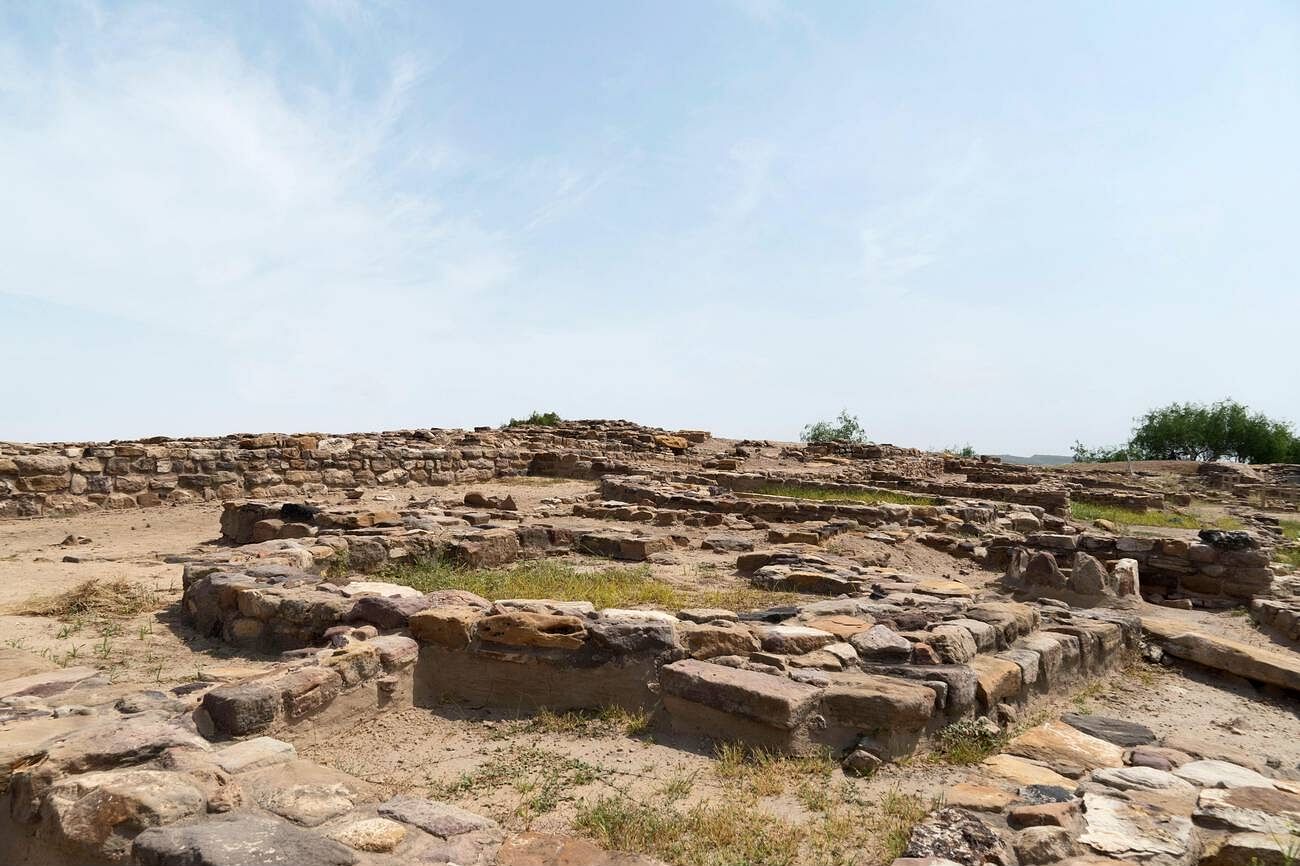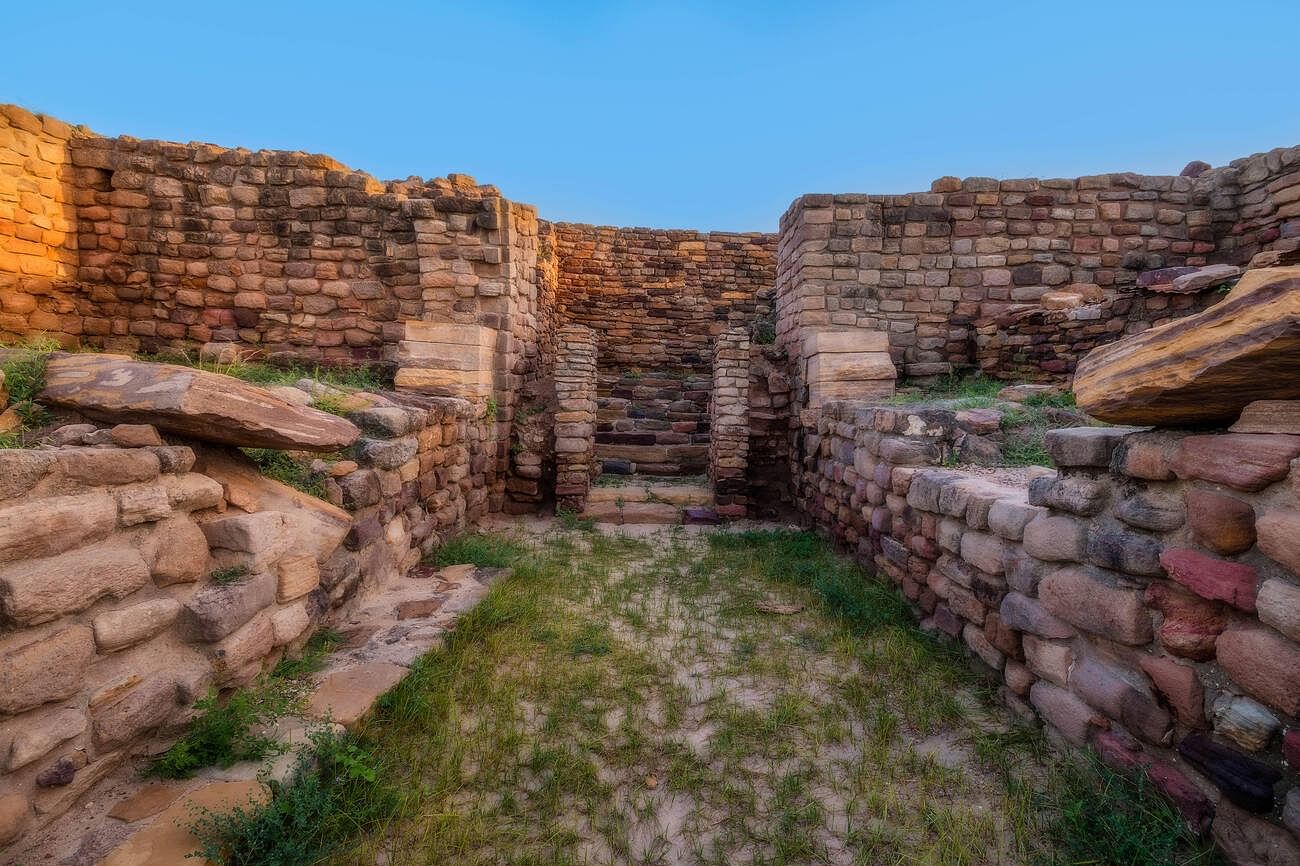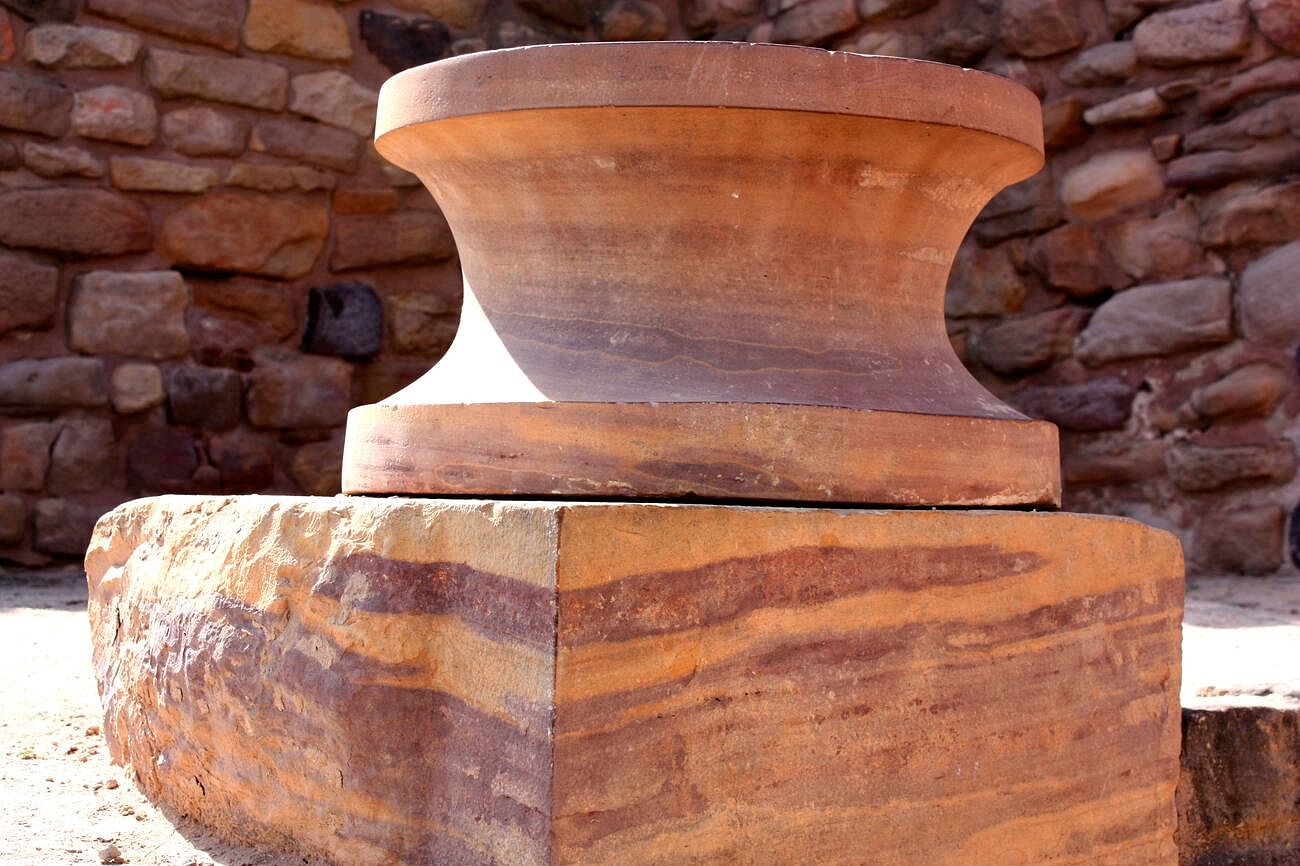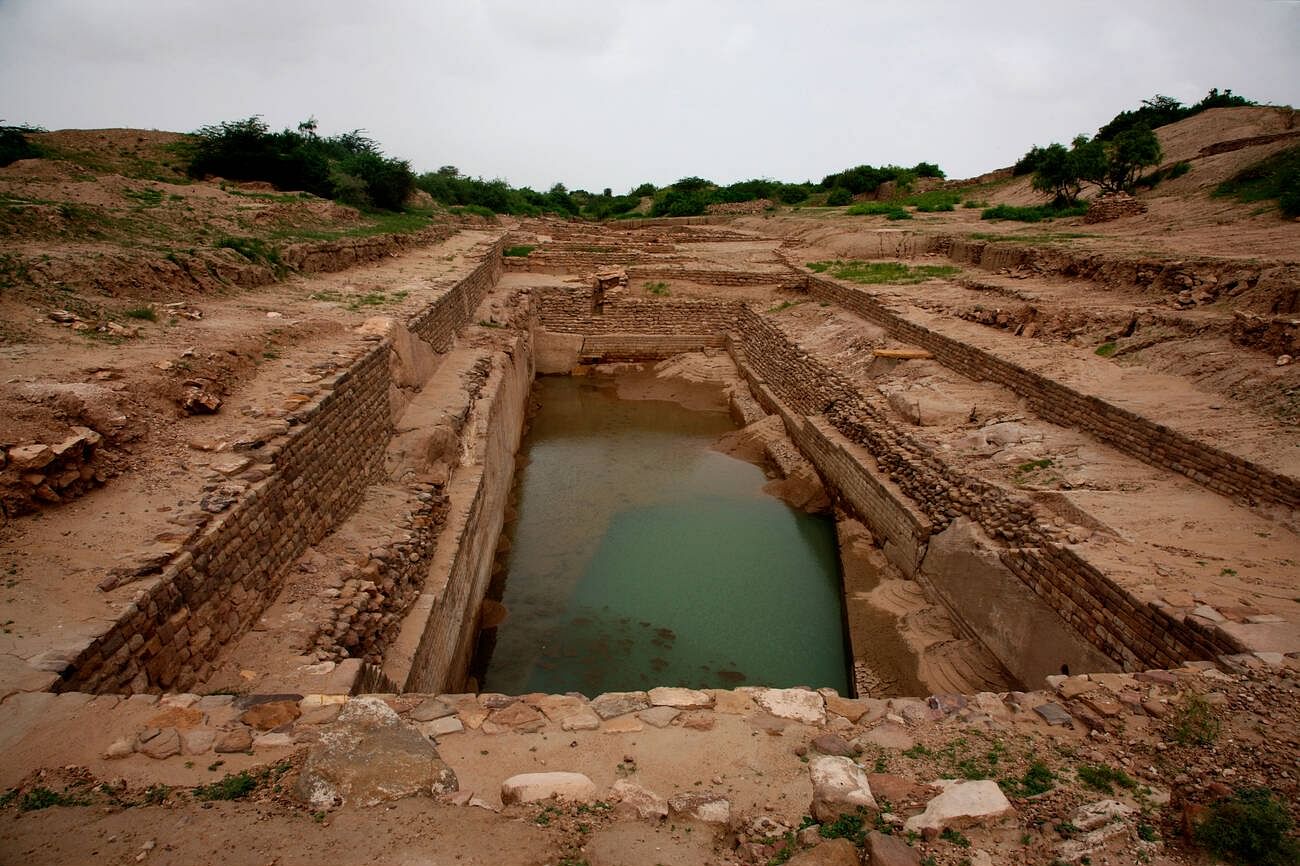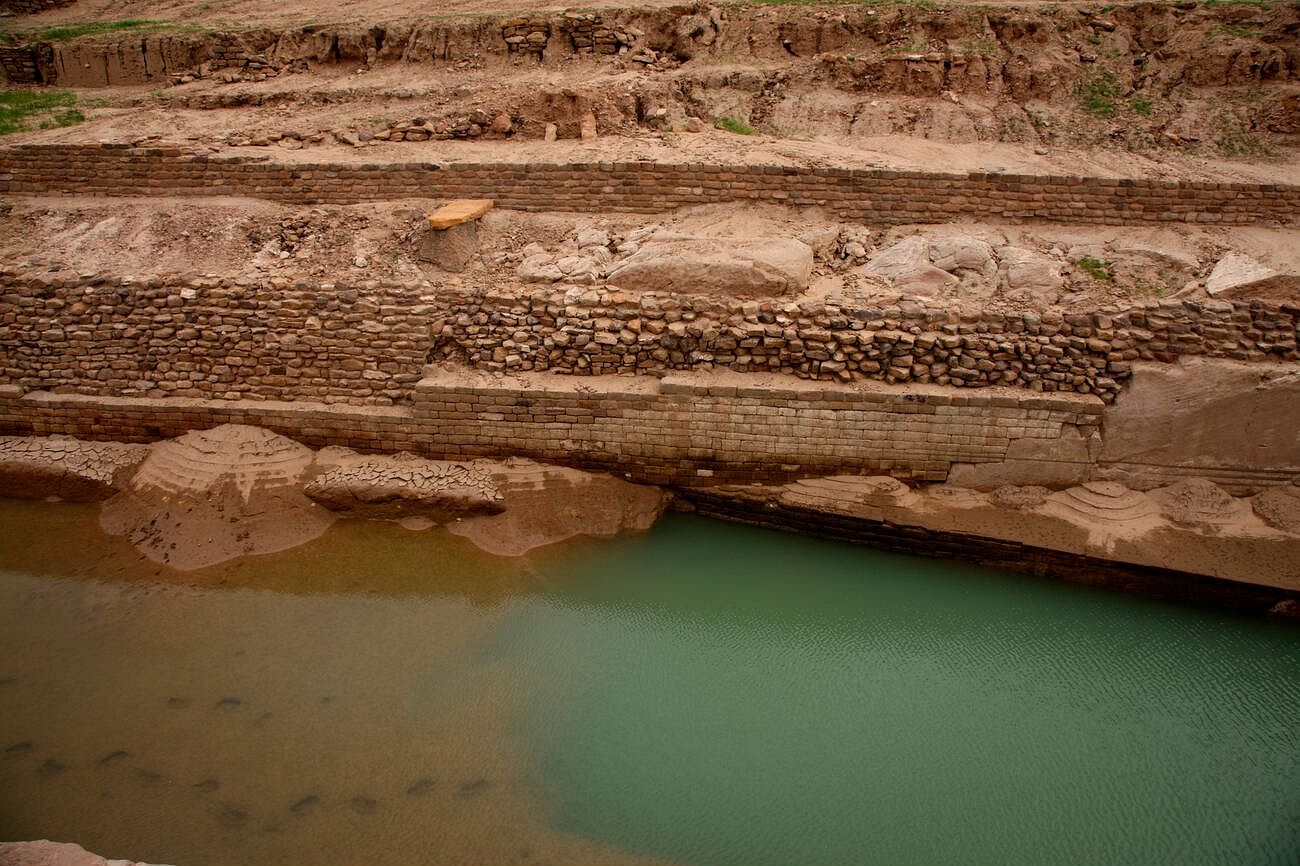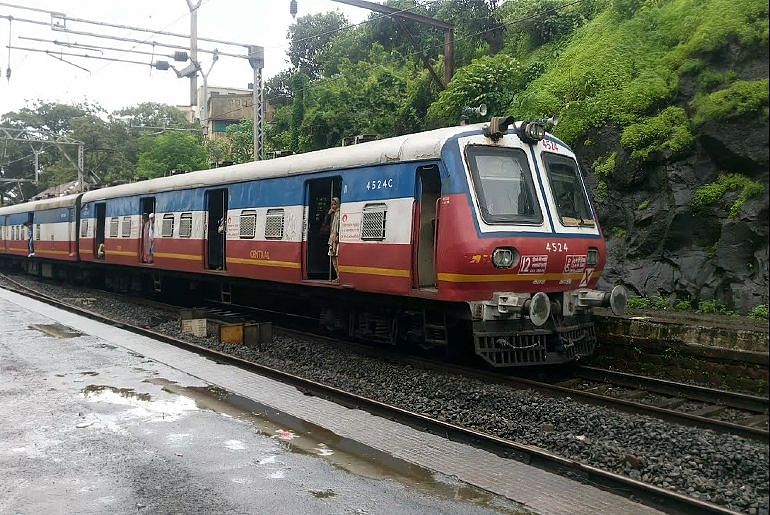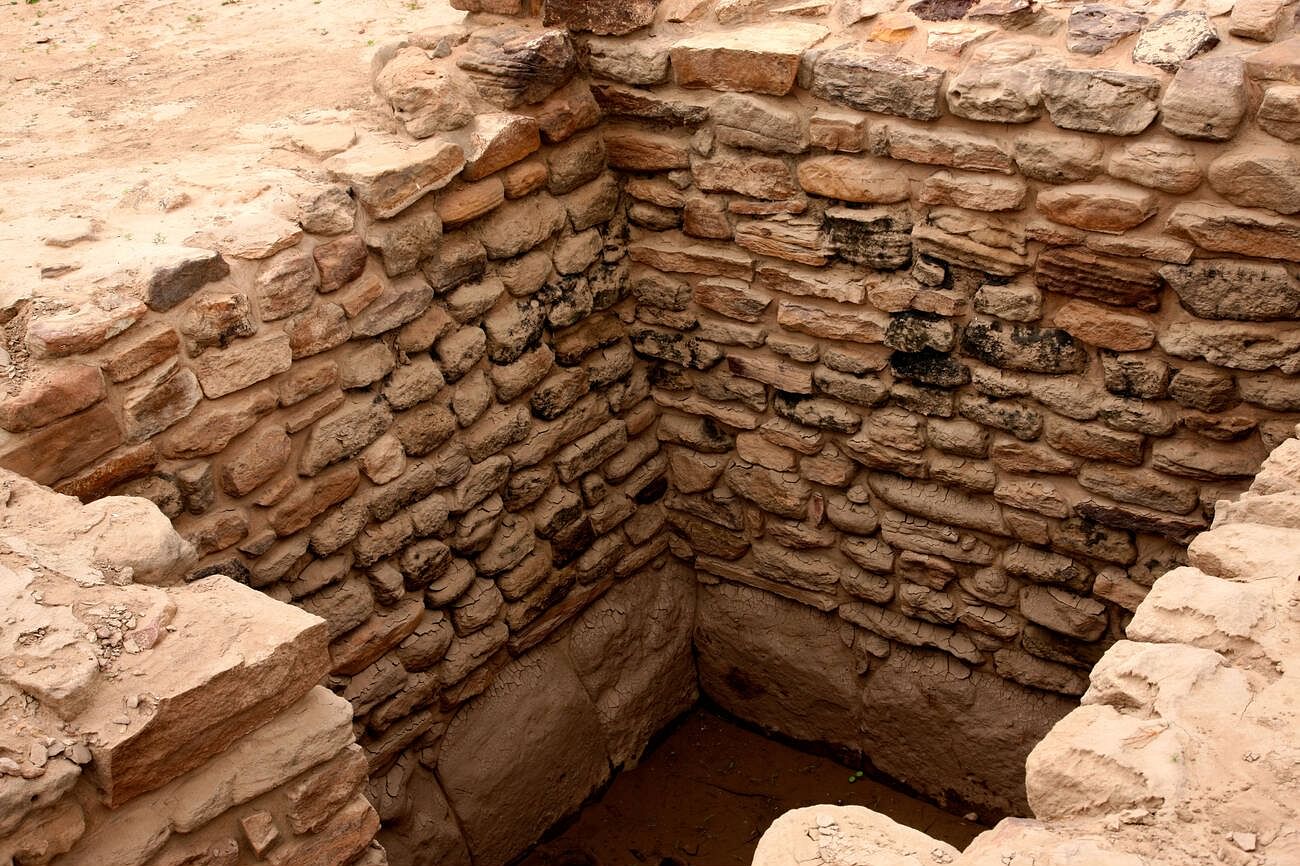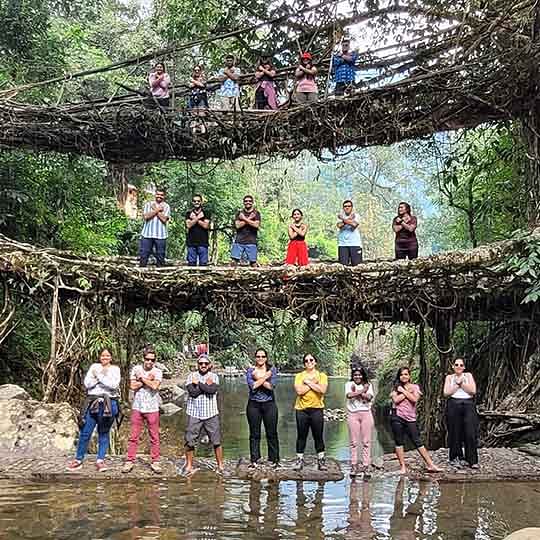You’ve probably heard of Harappa and Mohenjo-Daro, right? The ancient cities that are always the stars of history class? But let me introduce you to their lesser-known sibling—Dholavira. I stumbled upon its story while reading about the Indus Valley Civilization, and let me tell you, this place is no less fascinating.I was standing in the middle of a desert, surrounded by ancient ruins that once belonged to a city thriving 5,000 years ago. This isn’t some random pile of rocks—it’s the lost city of Dholavira, an engineering marvel of the Indus Valley Civilization. Think water tanks bigger than swimming pools, a city plan so smart it puts some modern designs to shame, and a mysterious signboard with symbols no one has cracked yet.
But here’s the twist: this thriving city, which survived in a harsh desert, just disappeared one day. Why? That’s the million-dollar question! As I dug deeper into its story, I couldn’t help but wonder what secrets did Dholavira take with it when it faded into history? Let’s uncover the mysteries of Dholavira together!
Suggested Read: Tourist Places in Gujarat India: Don’t Miss These Hotspots
The Fascinating History of Dholavira
3300 BCE – The Rise of the Indus Valley CivilizationThe journey of Dholavira begins with the Indus Valley Civilization, one of the world’s oldest. Known for its advanced cities and trade networks, this civilization laid the foundation for Dholavira’s future prominence.
2500 BCE – Dholavira’s Golden Era
By 2500 BCE, Dholavira had become one of the most significant cities of the Harappan culture. It was a thriving center for trade and culture, boasting advanced urban planning, massive reservoirs, and an impressive layout. Its architecture reflected the ingenuity of the Harappan people, making it a shining jewel of the Indus Valley Civilization.
1967–68 – Rediscovery of Dholavira
After centuries of being hidden under layers of earth and time, the lost city of Dholavira was rediscovered in 1967–68 by J.P. Joshi of the Archaeological Survey of India (ASI). This marked a turning point in uncovering the history of Dholavira for the modern world.
1990 – Excavations Begin
The ASI began systematic excavations in 1990, revealing the grandeur of this ancient city. Its impressive water conservation system, large citadel, and mysterious signboard became highlights of its archaeological importance. The findings gave new dimensions to the history of Dholavira.
2021 – Dholavira Becomes a UNESCO World Heritage Site
On July 27, 2021, Dholavira was recognized as a UNESCO World Heritage Site under the name Dholavira: A Harappan City. This acknowledgment as “Dholavira World Heritage Site” placed the city among the most celebrated archaeological sites in the world.
The history of Dholavira showcases its brilliance as a hub of trade and innovation in the ancient world, earning it the prestigious title of a Dholavira World Heritage Site. Its legacy continues to inspire awe and curiosity, bringing us closer to the wonders of the Indus Valley Civilization.
Dholavira’s Architectural and Artistic Mastery
Dholavira, one of the most remarkable sites of the Indus Valley Civilization, is estimated to be older than the port-city of Lothal. Unlike other cities of Harappan Civilization like Harappa and Mohenjo-Daro, Dholavira was carefully planned and laid out in a rectangular shape, covering 22 hectares (54 acres). The city was divided into three main sections: the citadel, the middle town, and the lower town. This design shows the city’s advanced urban planning, a key part of Dholavira’s Architectural and Artistic Mastery.The citadel was the most fortified area and had double ramparts to protect it. The middle town was built with streets, wells, open spaces, and defense works, showcasing how Dholavira’s Architectural and Artistic Mastery was ahead of its time.
What makes Dholavira stand out even more is that its buildings were made of stone, unlike most other Harappan cities that used brick. The city was also strategically placed between two stormwater channels, the Mansar in the north and the Manhar in the south. The “Citadel,” an elevated area in the city, further highlights Dholavira’s Architectural and Artistic Mastery with its grand design and impressive structure.
Some of the highlights:
- The Great Bath: A large, rectangular tank used for ritualistic bathing and religious ceremonies, reflecting the spiritual aspects of life in Dholavira.
- Water Reservoirs: Massive reservoirs designed to store rainwater, showcasing the city’s advanced water management system, crucial for survival in a desert environment.
- The Citadel Gate: A monumental entrance to the administrative center, emphasizing the city’s focus on security and crafted with intricate design and strategic location.
- The Assembly Hall: A large, well-planned structure that likely served as a meeting place for city leaders, highlighting Dholavira’s organization for governance and decision-making.
- The Stadium: A recreational space showcasing the vibrant social and cultural life in Dholavira, emphasizing the importance of sports and community activities.
Suggested Read: 15 Best Things to Do In Gujarat
Uncovering the Engineering Marvels
Dholavira is a great example of ancient engineering, with many impressive features that show the skill of its creators. Here are some of the key engineering wonders of the city:- Advanced Water Reservoirs: Dholavira had a system of large reservoirs to store rainwater, allowing the city to survive in a dry desert area. The way these reservoirs were built shows the city’s advanced engineering.
- Stormwater Channels: The city had two stormwater channels, the Mansar in the north and the Manhar in the south, designed to manage floodwaters. This clever use of natural resources helped the city handle heavy rains and avoid flooding.
- Efficient Drainage System: Dholavira also had a smart drainage system to control the flow of water throughout the city, improving hygiene and showing their knowledge of urban planning.
- Well-Planned City Layout: The city was divided into three parts—citadel, middle town, and lower town. Each area was organized with streets, wells, and open spaces, making the city well-planned and easy to navigate.
- Use of Stone: Unlike many other Harappan cities that used brick, Dholavira’s buildings were made of stone, making them more durable. This use of stone was an innovative engineering choice for the time.
Civilization with no access to modern technology developed such clever methods to thrive in a semi-arid region—this adds to the mysteries of Dholavira. How did they build such an advanced city without the tools and technology we have today?
The engineering marvels of the lost city of Dholavira continue to amaze, and the city stands as a symbol of the brilliant minds behind it. Harappan civilization was known for its ingenuity, but Dholavira takes it to a whole new level, leaving us to wonder about the secrets hidden within the lost city of Dholavira.
Suggested Read: Exploring The Fairs And Festivals In Gujarat
What Happened to the Lost City of Dholavira?
The Lost City of Dholavira was once a bustling city of the Harappan Civilization, but now it’s just a fascinating set of ruins in the middle of a desert. The mysteries of Dholavira have puzzled historians and archaeologists for years. So, what exactly happened to this ancient marvel?- Climate Change: The Big Problem
One reason might be that the weather changed. The region, which was once more fertile, started to dry up. The mysteries of Dholavira could be linked to this change. As the land got drier, the people had a harder time getting enough water, and the city couldn’t survive.
Dholavira was known for its clever water management, but as the area became drier, it got harder to manage the water. The mysteries of Dholavira might be connected to how the city couldn’t keep up with its need for water. Without water, it’s difficult for a city to thrive.
Maybe the people used up all the resources around them. As the land became less fertile, the city had fewer supplies to survive on. The mysteries of Dholavira might be about a place that couldn’t keep going because its resources ran out.
Did the people of Dholavira pack up and leave? It’s possible. As life got harder, they may have moved to other areas, leaving behind the once-great city. The mysteries of Dholavira could be the story of a group of people searching for a better place to live.
So, what happened to the lost city of Dholavira? While no one knows for sure, these ideas give us clues about why it disappeared. The remains of Dholavira still stand, holding secrets from the past and leaving us curious about what really happened to this incredible city.
Why Dholavira Matters Today
The Lost City of Dholavira matters today because it offers a glimpse into the advanced urban planning and culture of the Harappan Civilization. Known for its impressive water management systems, Dholavira thrived in a dry region, showing how people adapted to their environment. The city’s artifacts, inscriptions, and architecture provide valuable insights into ancient life, trade, and daily activities. Recognized as a UNESCO World Heritage Site, Dholavira continues to educate and inspire, reminding us of the importance of sustainability and understanding our shared human history. Its preservation ensures that future generations can learn from this ancient marvel.
Suggested Read: Rani ki Vav Gujarat: How Did a Queen’s Love Shape History?
Travel Guide to Dholavira
The best time to visit Dholavira is between October and March, when the weather is pleasant and ideal for exploring. The summer months can be incredibly hot, making it less comfortable for outdoor activities.The lost city of Dholavira is located in the Kutch district of Gujarat, India, and is one of the most fascinating archaeological sites from the Harappan civilization. Whether you’re traveling from within India or abroad, here’s a guide to help you plan your trip to Dholavira Kutch.The nearest airport to Dholavira is in Bhuj, which is about 165 kilometers away from the site. Bhuj is well-connected with major cities like Mumbai, Ahmedabad, and Delhi. From Bhuj airport, you can hire a taxi or rent a car to reach Dholavira, which takes approximately 3-4 hours by road.
The nearest railway station to Dholavira is in Bhuj as well. Bhuj is connected to major cities like Ahmedabad, Mumbai, and Delhi by trains. Once you arrive at Bhuj station, you can take a taxi or hire a car to reach Dholavira.
Dholavira is located in a remote region, but it’s accessible by road from various parts of Gujarat. You can take a bus or hire a taxi from Bhuj or other nearby cities to reach the site. The roads are well-maintained, and the drive offers beautiful views of the Kutch landscape.
If you’re up for a road trip, you can also drive yourself to Dholavira. The city is connected by good roads from Bhuj, and renting a car gives you the flexibility to explore the region at your own pace.
- Dholavira Excavation Site: The main attraction here is the ruins of Dholavira itself. Explore the ancient city, including its citadel, middle town, and lower town. Don’t miss the Great Bath, water reservoirs, and impressive stormwater channels. The architecture and engineering feats will leave you in awe of the ancient Harappan civilization.
- Museum of Dholavira: Visit the museum located near the excavation site to learn more about the history and discoveries at Dholavira. The museum houses artifacts, pottery, and models that bring the lost city to life.
- Kutch Desert Wildlife Sanctuary: Just a short drive away, this sanctuary offers a chance to see local wildlife and enjoy the natural beauty of the Kutch desert, making it an excellent complement to your visit to Dholavira Kutch.
- Rann of Kutch: A visit to the nearby Rann of Kutch is highly recommended, especially during the Rann Utsav (a cultural festival held between November and February). The sight of the vast white salt desert under the moonlight is simply mesmerizing.




